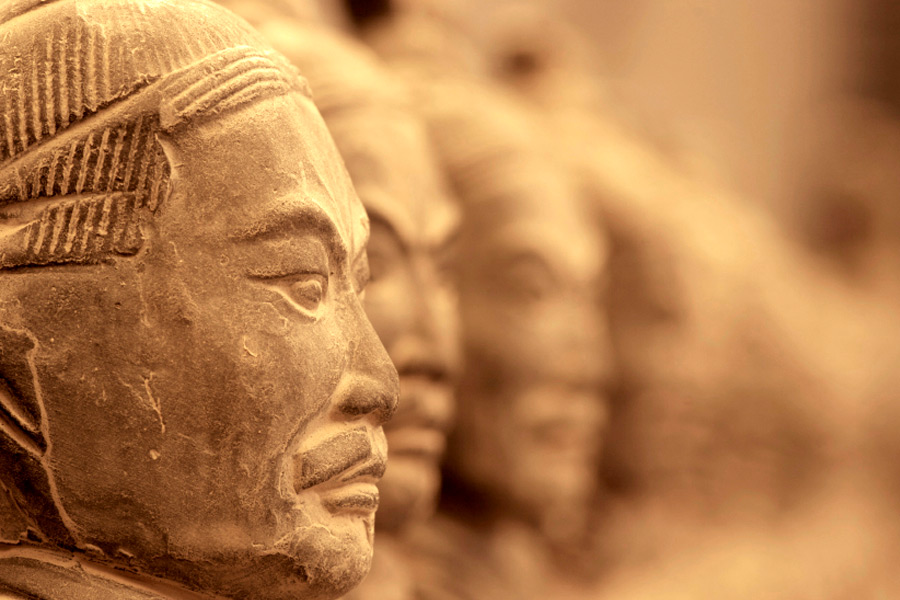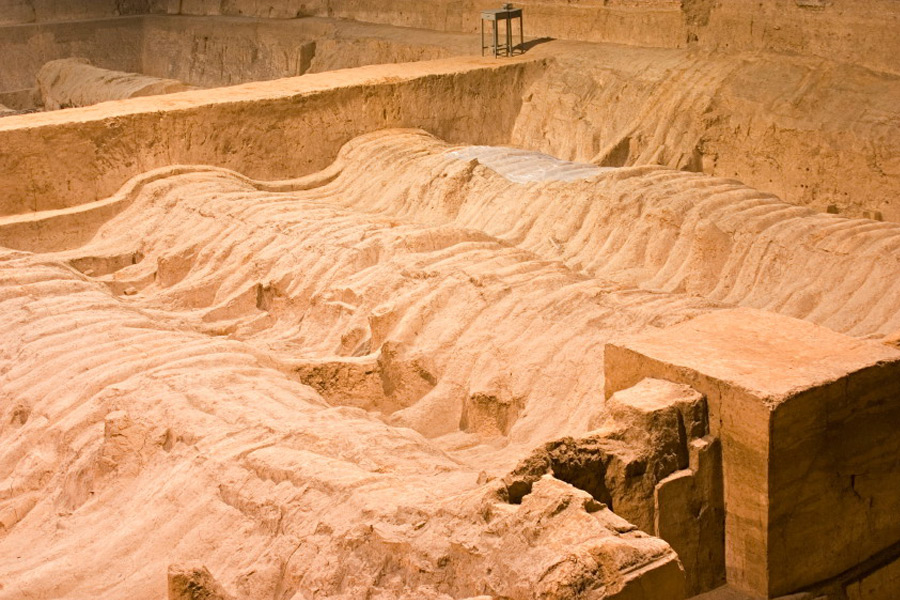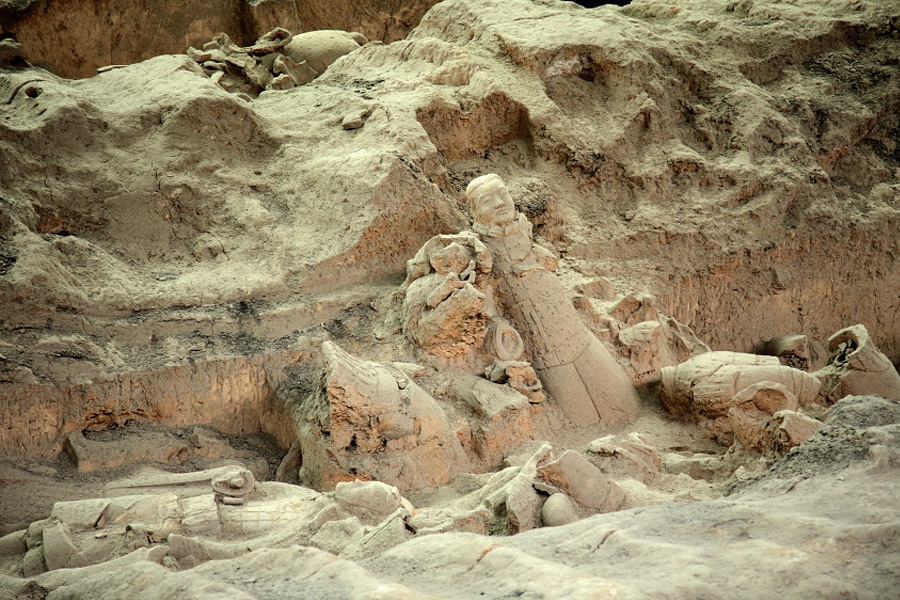
Terracotta Army of Qin Shi Huang - The Eighth Wonder of the World
China's lands keep an ancient and rich history dating back many centuries BC. Ancient Buddhist temples, imperial palaces, multi-tiered pagoda decorate China, co-existing in harmony with the modern architecture of soaring heavenward skyscrapers and shopping malls.
And today, in a literal sense, to discover new and undiscovered evidences of bygone days of ancient Chinese civilization, you have just to dig deeper. The Chinese even have a joke about it, they say, you cannot build a new building without running against the artifacts hidden in the bowels of the earth.
In 1974, Sian peasants went to Mount Lishan to dig a new well there. Imagine their surprise when, instead of water, they found a lot of strange shards. The initiated excavations revealed a few dozens of very old clay statues of warriors. Some of them have come down to us in a very good state, while the others have turned into a pile of scattered debris. This was how begins the story of one of the world’s most significant archaeological discoveries - the eighth wonder of the world - Emperor Qin Shi Huang’s terracotta army.
Excavations, carried out with the greatest caution, as there was a danger of serious damage to artifacts, were divided into three stages. The first phase was conducted from 1974 to 1984, the second from 1985 to 1986, and the third phase started in 2009 and is still underway. As of today, the scientists have discovered 8,099 soldiers of burnt clay. The warriors were arranged in three rows at a distance of 1.5 km to the east of the First Chinese Emperor tomb - Qin Shi Huang.

Qin Shi Huang has made history of China as the unifier of China's lands under a single authority; it was him, under whose ministry the construction of the Great Wall of China, to protect China from the raids of barbarian tribes from the north, was initiated. The construction of the Qin Shi Huang’s tomb was started during his lifetime. And after his death, he was entombed together with his 70,000 courtiers, concubines, servants and workers with their families, buried alive. The Chinese army’s warriors were given quarter in this respect. However, their copies were sculptured and buried to stand guard over Qin Shi Huang in the afterlife, instead.
The warriors were made from clay mixture, based on local material from Mount Lishan. Each figure of the warriors was made in a skillful way: it artfully reproduced not only the warriors’ combat clothing, but also their faces and hairstyles. All the terracotta warriors have their own unique faces: they were obviously sculptured from real people as models. However they were above average stature, about 2 meters, in terrorem of enemies.
Among the soldiers there were simple infantrymen, shooters and cavaliers with clay horses, sized of a pony. Arrayed, the soldiers had a real gun in the hands. Although, in length of time the wooden bows have decayed, the spears, crossbows and swords have survived pretty well. It should be noted that not every soldiers had a weapon. The scientists suggest that some of the weapons were stolen during the peasant uprising during the reign of Emperor Qin Shi Huang's son.
The clay warriors were made by hand and in parts, which were subsequently assembled. The warriors were burnt, hence the name - the Terracotta army. Then they were painted, but, unfortunately, with the time and from a long stay in earth, the paints faded. Only the efforts of the restorers allow the contemporaries to see them in the original coloring, by the way, quite varieated.

The scientists have found that the warriors and horses were made in different places; the weight of the horses was about 200 kg, while the statues of soldiers - 135 kg. Together with clay statues of warriors and horses were also found statues of civilians - officials, musicians and acrobats. About a hundred combat bronze chariots with elements of copper and gold were also found. By that time the Chinese army was armed with wooden chariots, but they did not come down to us.
Today the terracotta warriors are one of the most famous landmarks in the world, included in the list of state-level objects of China and the World Heritage List of UNESCO. Several-thousand- strong terracotta army makes up an exposition of the museum, covering 16 hectares, opened right at the site of excavation. The museum is located in Qinling village, 30 km from Xi’an. You can get there either by bus from the Xi'an terminal land side or by car by the Situn motorway.
The number of those wishing to see the terracotta warriors is great, so you will have to stand in a long queue at ticket offices. But all the inconvenience will be repaid a hundredfold. The complex itself consists of the museum and three pavilions, where excavations are still underway. Tourists are recommended to visit the pavilions in the reverse order, starting with the third. The third pavilion is the smallest one and houses basically destroyed figure. The second and first pavilions are represented by restored terracotta warriors in all their glory.
The technique and skill, the terracotta warriors were made with, indicate a high level of development of Chinese painting as early as the III millennium BC. Before the discovery of the terracotta army, the heyday era of Chinese art was considered that of the Tang Dynasty, which ruled China, several centuries later. Currently, the scientists continue to make sensational discoveries at the site, but still, they are hesitant to proceed to the study of the tomb itself.

